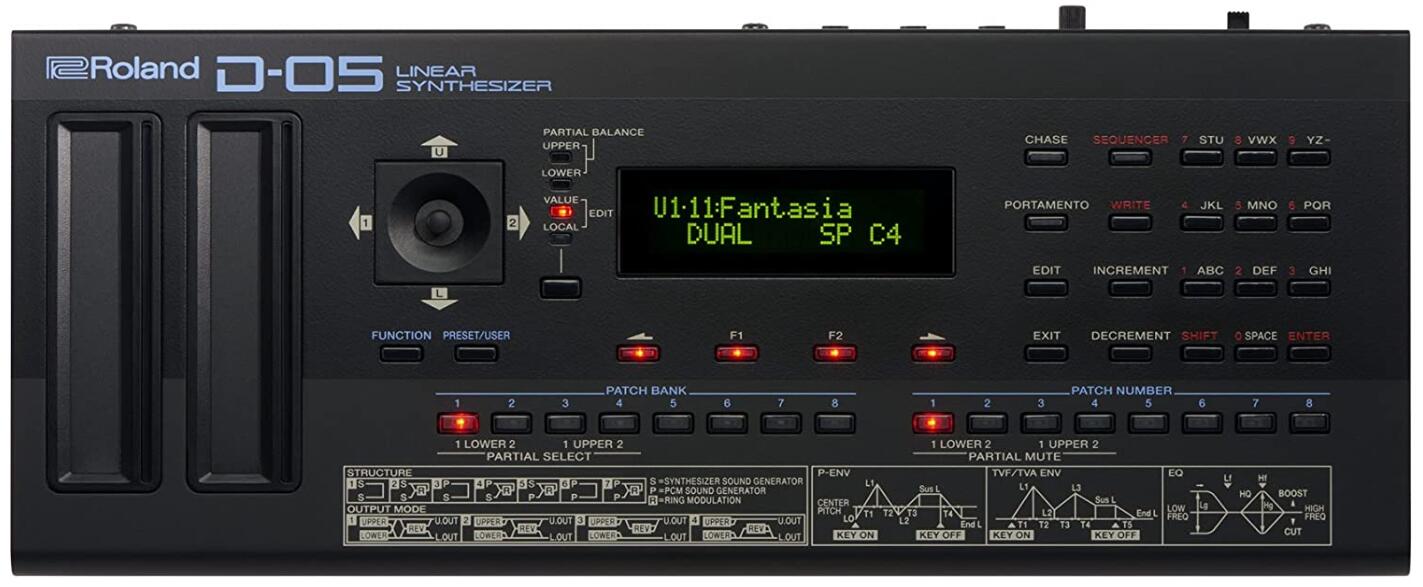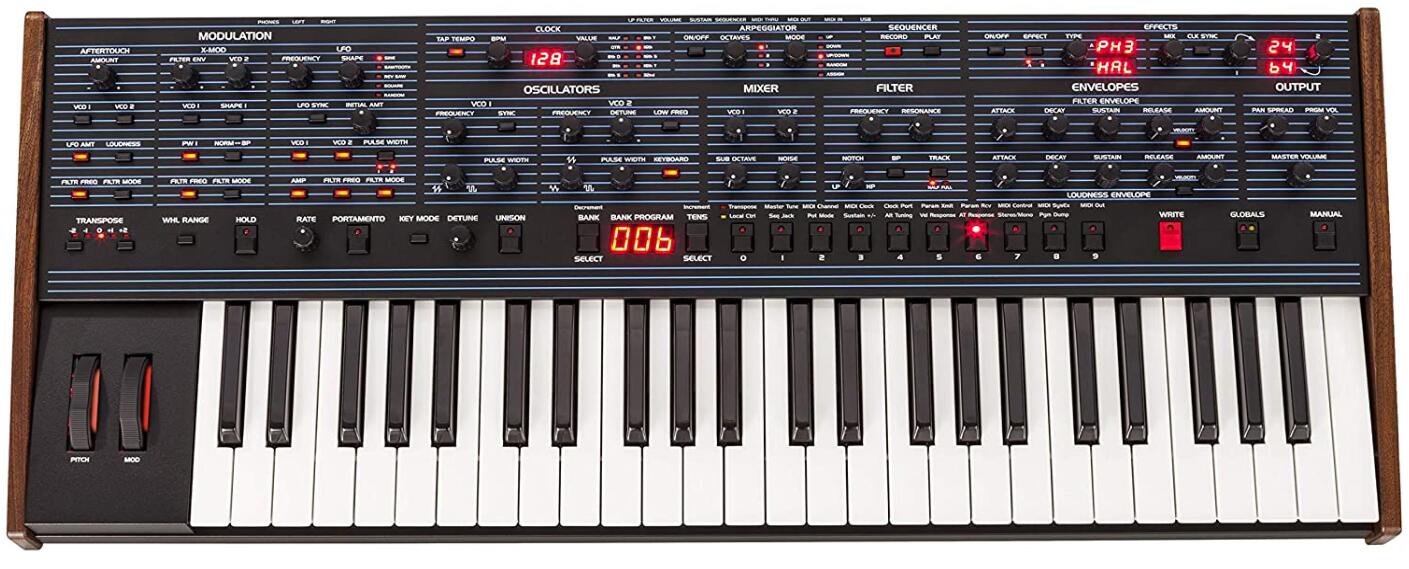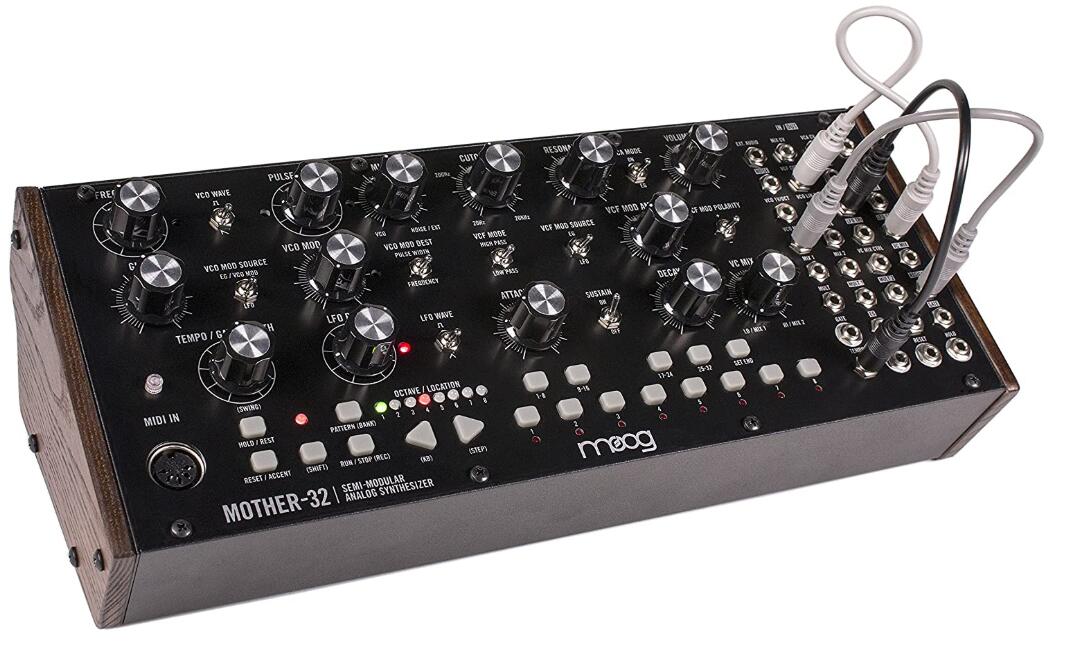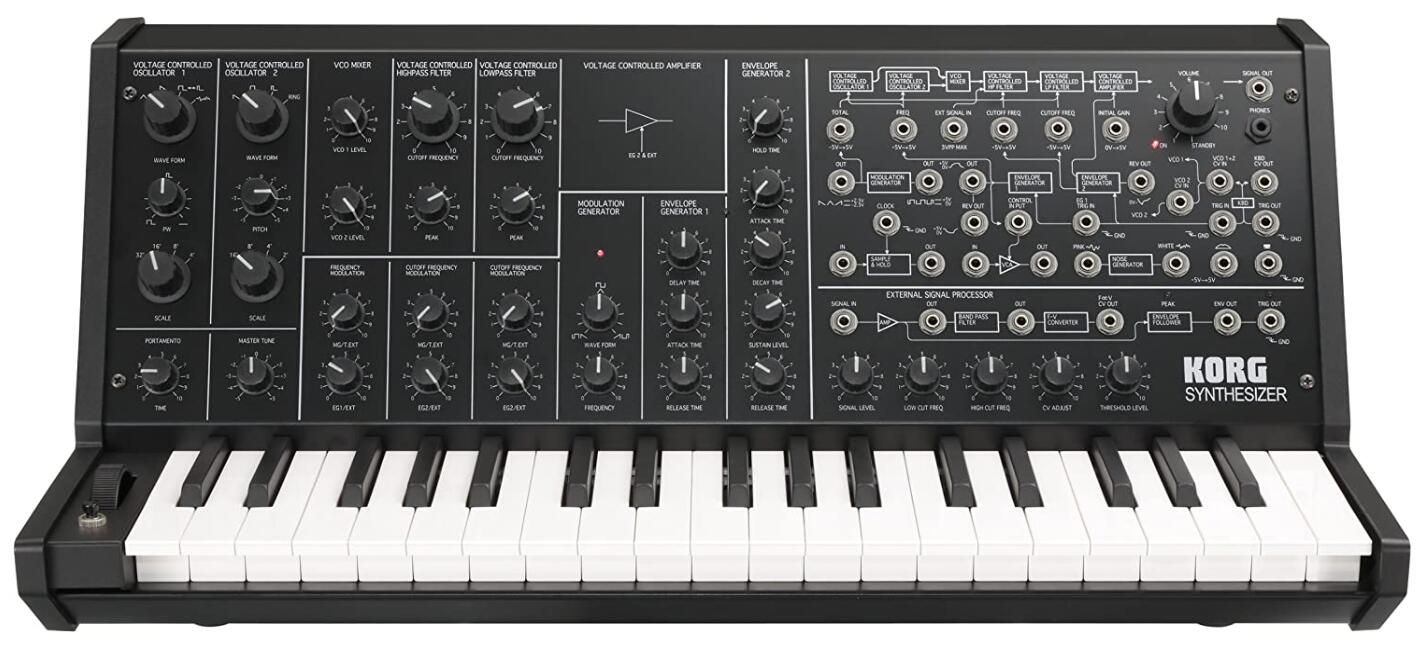The synths make sure they enhance your capability to produce ambient soundscapes. It does not matter if you feature electronic ambiance more or environmental sound; there are a variety of options available for you.
With the best synth for ambient, you can customize your sound, with analog synths, for example, the Arturia V collection, you get a unique tone that will, in turn, enable you to make great ambient music. With this article, you will get the needed information to make a great decision on the best synth to help you make a great ambient sound.
5 Best Synths for Ambient Music On the Market
Best Synth for Ambient Buying Guide
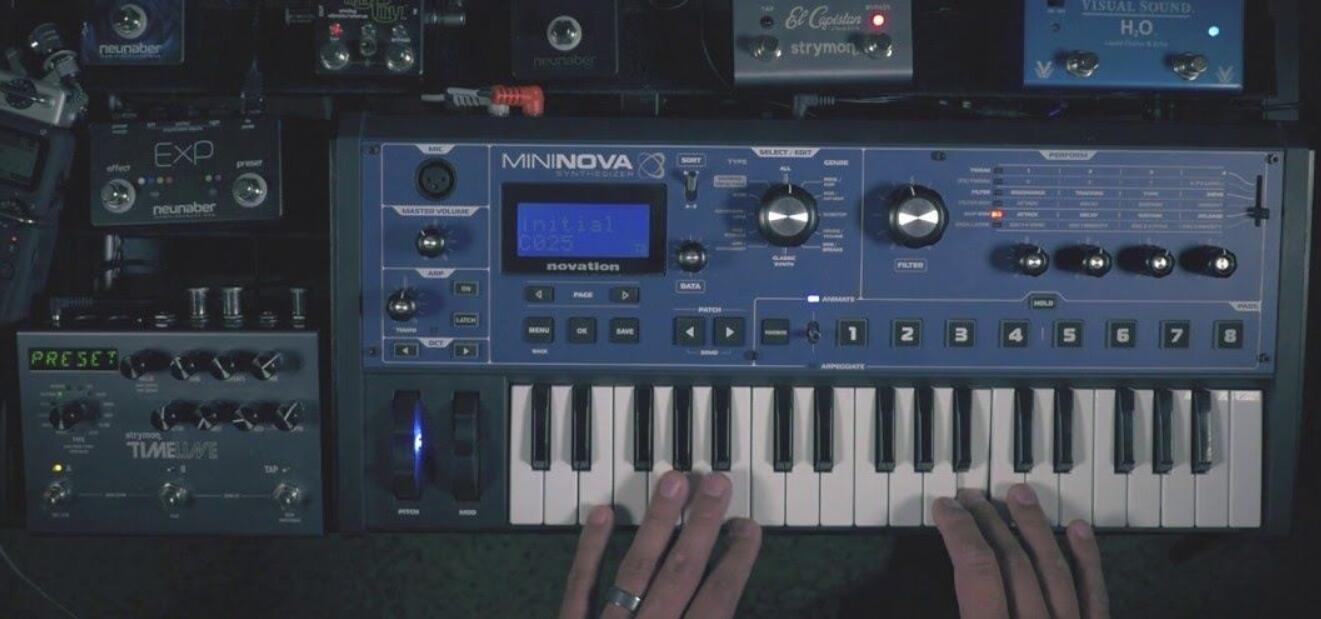
The current market has lots of synths, and finding the best for ambient isn’t a simple process. It would help if you got it right else you will be dealing with a synth for a different function.
With the right features and considerations, the selection process becomes faster and straight forward. ‘
That’s why we decided to list for you the various things you need to consider while you search for the best synth for ambient.
-
Sequencer
If you’re looking for a synth for making ambient music, you may have a limited or even no keyboard ability. If that is the case, then you want a sequencer in your ambient synth. That will ensure that you can write a bass line or melody, note by note, to the onboard memory.
Additionally, it will leave you with free hands for tweaking stuff like resonance and cutoff. That’s essential to produce acid-like sound and add effects as your ambient sound pattern loops in the background.
-
Synths Size
Big synths for ambient may look cool and all, but, if you can’t access them, then what is the point. If you are buying a synth for ambient for the first time, then you probably have a tiny space, ensure you buy a compact synth, and with this, you can place it on the desk where you can readily use it. The smaller, the better because you can even go with it outside and make music anywhere you want.
-
Built-in Speaker
If you want an ambient mixer, monitor, or soundcard to route your synths audio, think about a synth with a built-in speaker. It may not sound great, but it better than wearing headphones. When you are in public, you can use headphones not to disturb the people there.
-
Digital or Analog
Some may believe that analog ambient sounds a lot warmer than the digital ambient synths; many people can even tell the difference. But for your first synth, how it sounds may not be that important, but choosing between digital and analog synths is vital because the type of synth used by the instrument may be affected by whether you want to stick with the presets or make your ambient sound.
Digital ambient synths can be confusing for even the experienced artists. If possible, get an analog ambient synth with a modeling tech upgrade. Ensure you buy a subtractive synth for ambient with precise controls and oscillator labels, filters, and labels, and you can pick the synths primary in no time.
Top 5 Best Synth for Ambient Reviews
Below is a list of some of the best synth for ambient sound:
1. Best Recommended -Yamaha DX7
Brilliant features
- Motion Control Synthesis
- Expressive sound interaction with 128-note AWM2 polyphony stereo
- Super Knob controls different parameters at the same time
- Live Sets for Performance organization without renaming, changing the order, or copying
Watch out for
- The super blinking button can’t be turned off
With the Yamaha MODX7, you stand out from the crowd. It is a light and compact synthesizer that is designed to inspire you when making music. This Yamaha synthesizer engine gives you the full potential to create unique music. The sound engine used is the same as the tech powering advanced wave memory 2, pure FM-X, and sample. It features a super knob that allows simultaneous control of as high as 128 parameters in a single-use, simultaneously.
Its motion sequences have a tempo-synchronization; they are fully customizable control sequences that can be used with synth parameters. The MODX also features a 128 note stereo AWM2 polyphony and FM-X polyphony with 64 notes. The seamless sound integration lets you switch performances without any cutoff in effects or envelope.
2. Roland D-05 Polyphonic Synth
Brilliant features
- All original presets plus new sound recreation
- Authentic user interface together with joystick control
- Battery or USB operated
- Rugged metal front panel construction
- Compact and lightweight
Watch out for
- You should buy a keyboard separately
Roland D-05 is an excellent synth because it has some significant updates. The 64-step polyphonic sequencer is unique for new ideas and performance; it can store your tempo and update changes. It can also do gate timing and sequence shuffle.
With the built-in arpeggiator, you can add movements to the evocative sounds that are already there. This polyphonic synth is compact and runs on USB power or batteries. With these features, you can go anywhere.
With it, you get flexible connectivity using the MIDI over USB. It can also be a computer audio interface, which means fewer cables, a fast setup, and less stuff. Because the Roland D-05 is compatible with Roland’s boutique accessories, you can use the optional DK-01 Boutique Dock for tilt options. With all these features, you will be surprised by its cost-effectiveness too.
3. Dave Smith OB-6 for Ambient
Brilliant features
- Great for both studio and stage
- Two oscillators per voice
- Continuous variable waveshapes
- Great build
- Collaboration between two influential synthesizer designers
- Small size making it easy to carry around
Watch out for
- A bit expensive
- Four octave keyboard
The OB-6 voice analog synth is a great collaboration between two great influential designers. It is all analog with six voice polysynth with voltage-controlled oscillators, controlled voltage amplifiers, and variable state filter, inspired by the original SEM design. The OB-6 features six analog voices with coupled oscillators per voice, variable continuous triangle waveshapes, and variable-width pulse waves.
There’s also the sawtooth dual digital effects with a phase shifter, and ring modulator X-mod with two sources and five destinations, a full-featured arpeggiator, and sonic signature. This analog synth is put into a semi-weighted keyboard with an after a touch of channel and velocity and four-octave, making it excellent for both studio and stage. It is sold and manufactured by Dave Smith instruments.
4. Moog Mother 32 Semi-Modular Synth
Brilliant features
- Inspired music creation
- Semi-Modular design and 64 Sequence Locations
- Voltage controlled mixers and sequencer
- Great for learning modular synthesis
- Affordable price
Watch out for
- Not for very professional music production
This synthesizer model is among the first table-top synth from Moog. It is an analog synth that gives you raw analog sound, extensive connectivity, and sequencing to any modular ecosystem and electronic. Moog Mother 32 is an updated live performance and a high production instrument crafted by hand.
It has been carefully designed to give musicians a different range of creative tools that will inspire your unique sound with endless explorations. The mother-32 comes with a secured aluminum enclosure with the sight of wood that makes it a great match to your indoor décor. The 32 step sequencer is voltage controlled and has 64 sequence locations.
5. Korg MS-20 Synth for Dark Ambient
Brilliant features
- Self-oscillating high and low filters
- Voltage control oscillator
- Well build construction
- External signal processor
- Flexible patching system
Watch out for
- Smaller keys that you may need time to get used to
The Korg MS-20 is an update of the 1978 analog synth. It gives you an excellent quality performance just like the original one, on top of that, it also has all the original components that the previous one offered. It features a sophisticated VCA amp that allows less noise.
This mini is great for those looking to make ambient music with classic, authentic sound. It includes a USB port and MIDI for the excellent connectivity of all your gear. Its small design features smaller keys, you may find them challenging at first, but after getting used to them, and you entirely enjoy the music produced.
What Do You Need for Making Ambient Music?
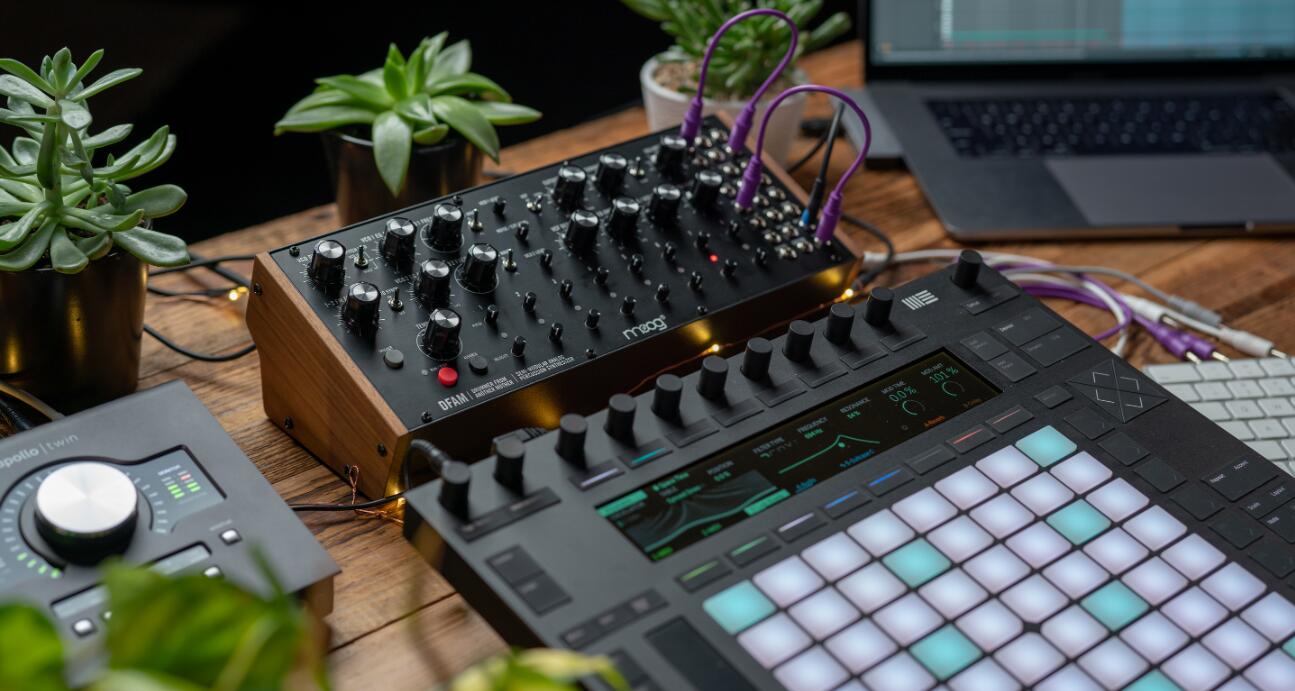
Most people listen to music as a stimulant; we crave rhythm and melody and want to feel inspired to dance, move, and sing around. Music shows you how powerful music can be and its magical quality. But with ambient music, it is the opposite; it is supposed to relax and soothe you, without distracting anything, it adds calmness to the environment and helps you focus more on what you are doing.
Ambient music is inspired by natural relaxing environments, those distant echoes that remind us that we are not alone, the warm, soothing calming power of a light breeze and distant ocean, gradually changing the soundscapes. If you consider all that, you will make ambient music. Some of the things you need to make ambient music include:
1. Listening – The best way to start is to surround yourself with influencers. Most artists do this with mood boards, listen to ambient music you love, and learn the feelings and aesthetics involved.
Ambient music may be diverse, but, it is more about the destination, it may take different forms, just ensure that at the end you produce music that is un-obstructive. With that said, listen more to different ambient music, and you will surely notice the threads used in ambient music.
2. Know What Makes Ambient – Ambient music has a few common elements. Rhythms are light and don’t involve percussion, which makes music more rhythmic and moving.
Therefore, any percussion found in ambient music is about texture rather than rhythm. Ambient music moves just because all music does, but, it does so slowly, there is no attention capturing.
3. Sonic Texture – The sonic texture is excellent in making great music. All music is made of many frequency combinations. The deeper you get into the production of music, you will realize there is a range of frequencies for different use and emotions. It is just like the green color calms you while the red excites.
4. Warmth – With these guidelines, you can either use your ears or a spectrum analyzer and EQ. Frequencies that range between 250-500 Hz are said to be warm; this is among the reasons that vinyl records are associated with warm sounds. Most ambient music range between 250- 500 Hz.
5. Reverb – Ambient music aims at being atmospheric; therefore, using reverb will give you a great outcome. The rules of reverb are different compared to other types of music.
You can go softer or denser with reverb because it is not essential to hear the original sound details. In ambient music, the music is slow, so reverb makes it less muddy, low-mid reverb adds warmth and power to sound.
With all the above points, you have more than enough to make great ambient music that you will enjoy.
Conclusion
All these models provide you with excellent value and are all suited to offer you ambiance. They are all tried and tested and proved to produce a great ambient sound. You just need to make a decision and buy one of them, and you will be able to provide great ambient music.
If you are a new producer looking for a synth, to begin with, consider the above synths as they are great for beginners. They give you a great learning experience while still on a budget. They are small in size so you can learn quickly and later gradually transfer to larger ones.







